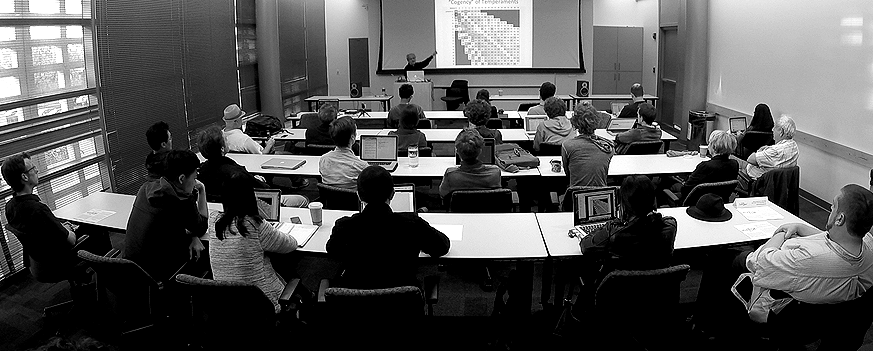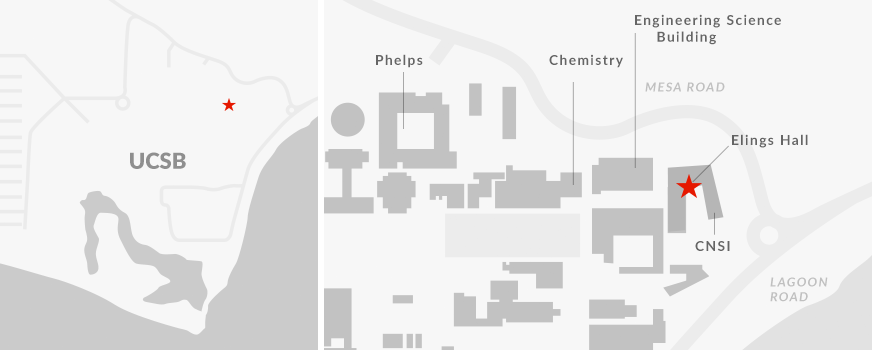/
Monte Carlo (MC) path-tracing is now the most common rendering algorithm used in industries ranging from architectural visualization to feature film production. MC rendering systems produce photorealistic images by simulating the physical flow of light through paths in the scene. However, if too few light paths are computed, the images are filled with objectionable noise, which made MC rendering unfeasible for over two decades. Today, MC denoising algorithms are the most popular tool for removing this noise, and they have been used in films such as Disney’s “Big Hero 6” and featured in products such Pixar’s Renderman and NVIDIA's Iray. However, it was only a few years ago that these post-process, screen-space denoising approaches were considered unsuitable for tackling even small amounts of MC noise, because it was thought they would either leave noise artifacts or overblur scene detail.
In this talk, we will present a first-hand account of the MC denoising revolution that has unfolded over the past decade and the key innovations that made it possible. We begin in the summer of 2008, when we observed the industrial “best-practices” for dealing with MC noise at Sony Pictures Imageworks, one of the first studios to adopt a path-tracer as the primary renderer. The limitations of the available approaches used in production motivated us to start exploring the possibility of robust MC denoising algorithms.
The first key idea we developed that we could output several features computed at render time (sample positions, surface normals, texture values) to make the denoiser more robust and effectively turn the rendering system into a black box. Since these features often contained MC noise, we realized we had to carefully adjust the manner in which these features were used from pixel to pixel in order to remove the noise but preserve the scene detail. The resulting system was the first to demonstrate that high-quality, post-process general MC denoising was indeed possible.
In subsequent work, we observed that the problem could be modeled as a supervised learning problem that would train a system to reproduce a denoised output from noisy inputs. Since training a full denoiser given a limited number of scenes was difficult, we trained an end-to-end system that would output the parameters of a filter that would produce a result comparable to the ground truth. Later, we extended this idea to work compute the final color directly, allowing the denoiser to work robustly in production environments. Our new system, developed in collaboration with Disney and Pixar, was trained using millions of examples from the Pixar film “Finding Dory” and then applied as a proof-of-concept to denoise the renderings for the upcoming Pixar films Cars 3 and Coco, even though they had completely different artistic styles and color palettes. Although MC denoising has been credited as being one of two key “enabling technologies” that brought path-tracing to feature film production, the journey is far from over. We conclude the talk by discussing future directions for MC denoising, and describe how it fits among the pantheon of tools available for variance reduction. |

/
Pradeep Sen is an Associate Professor in the UCSB MIRAGE Lab in the Department of Electrical and Computer Engineering at the University of California, Santa Barbara. He attended Purdue University from 1992 - 1996, where he graduated with a B.S. in Computer and Electrical Engineering. He then attended Stanford University where he received his M.S. in Electrical Engineering in 1998 in the area of electron-beam lithography. In 2000, he joined the Stanford Graphics Lab where he did research on real-time rendering and computational photography. He received his Ph.D. in Electrical Engineering in June 2006, advised by Dr. Pat Hanrahan. His research interests include algorithms for image synthesis, computational image processing, and computational photography, and he is a co-author of over 30 technical publications, including ten SIGGRAPH/SIGGRAPH Asia/ToG publications. Dr. Sen has been awarded more than $2.2 million in research funding, including an NSF CAREER award in 2009. |








